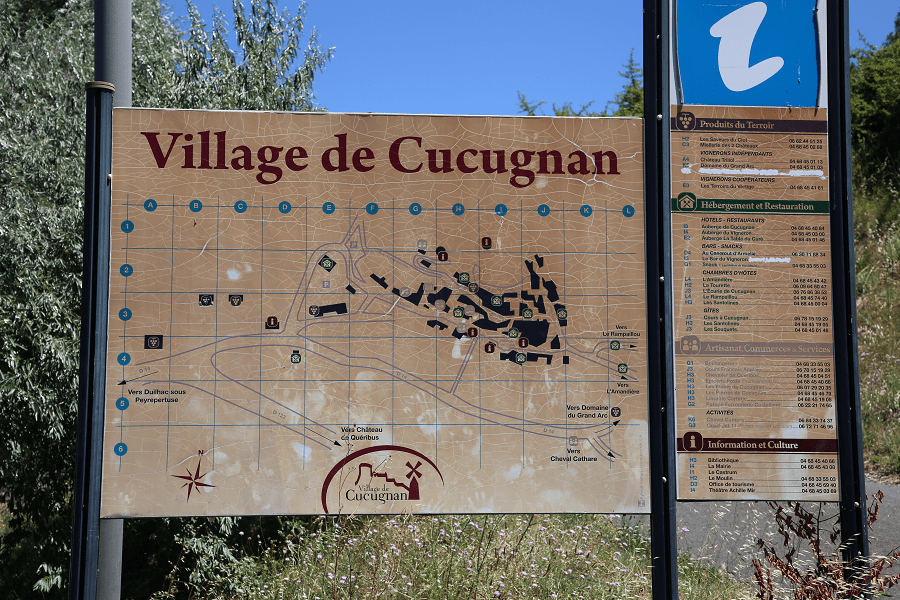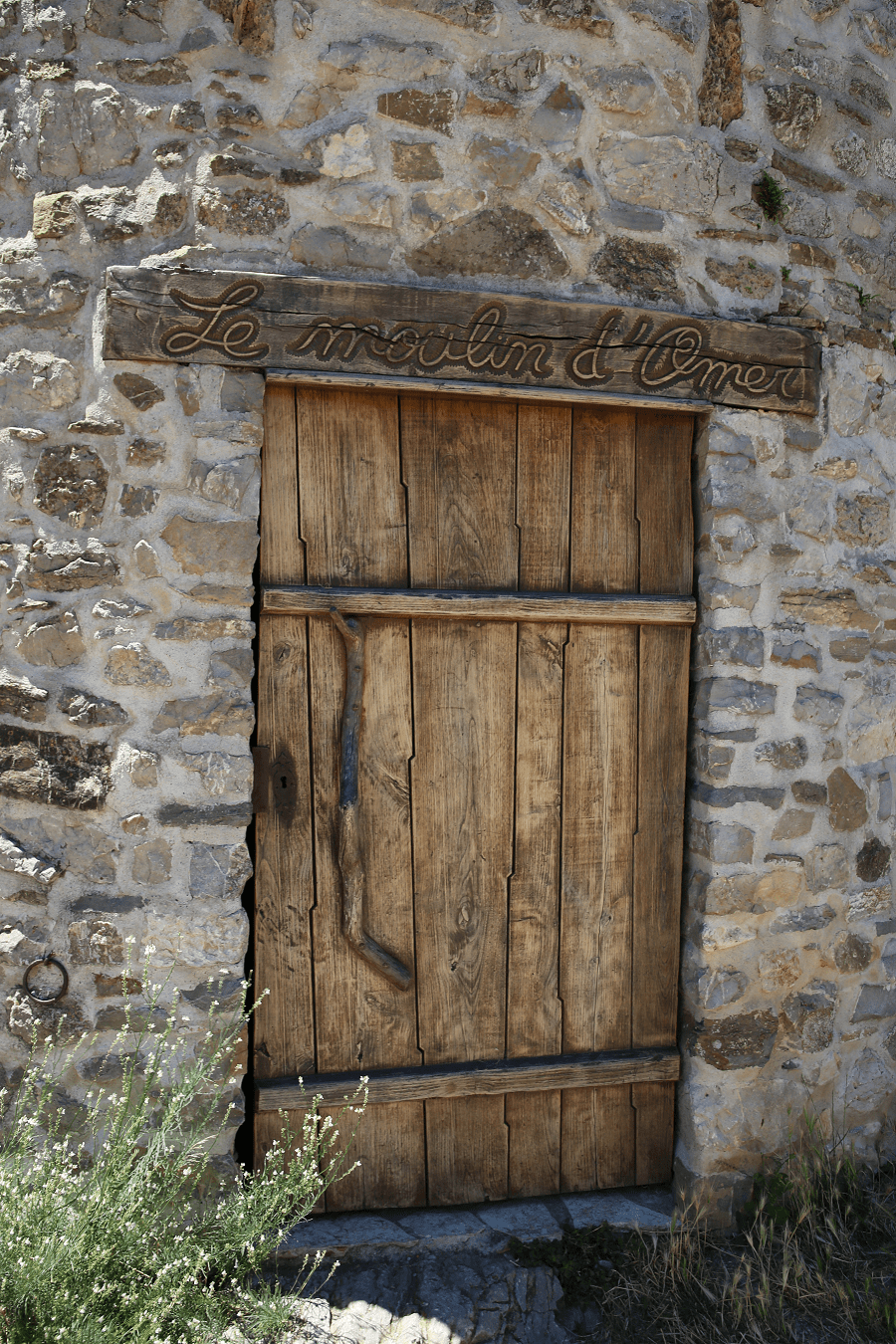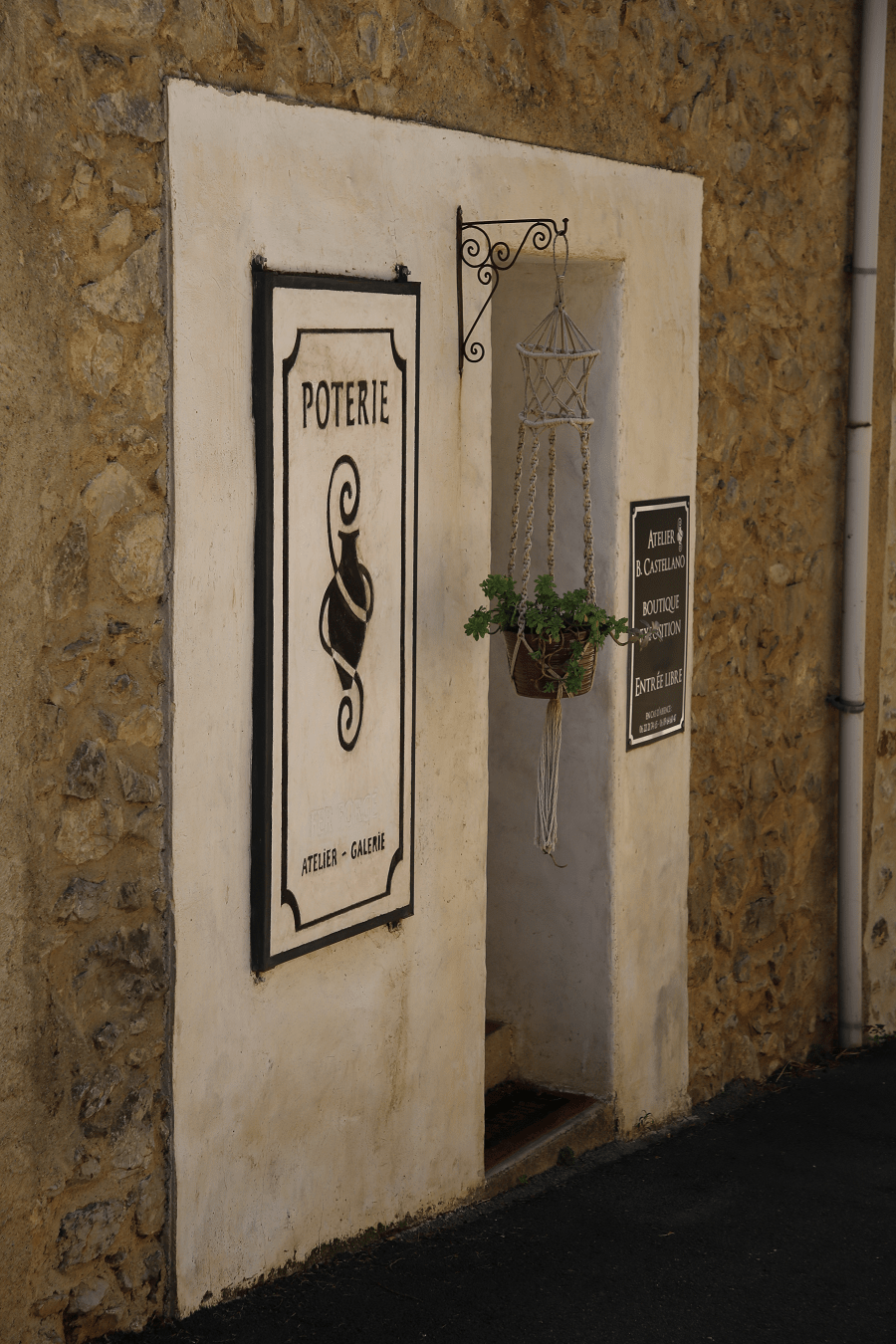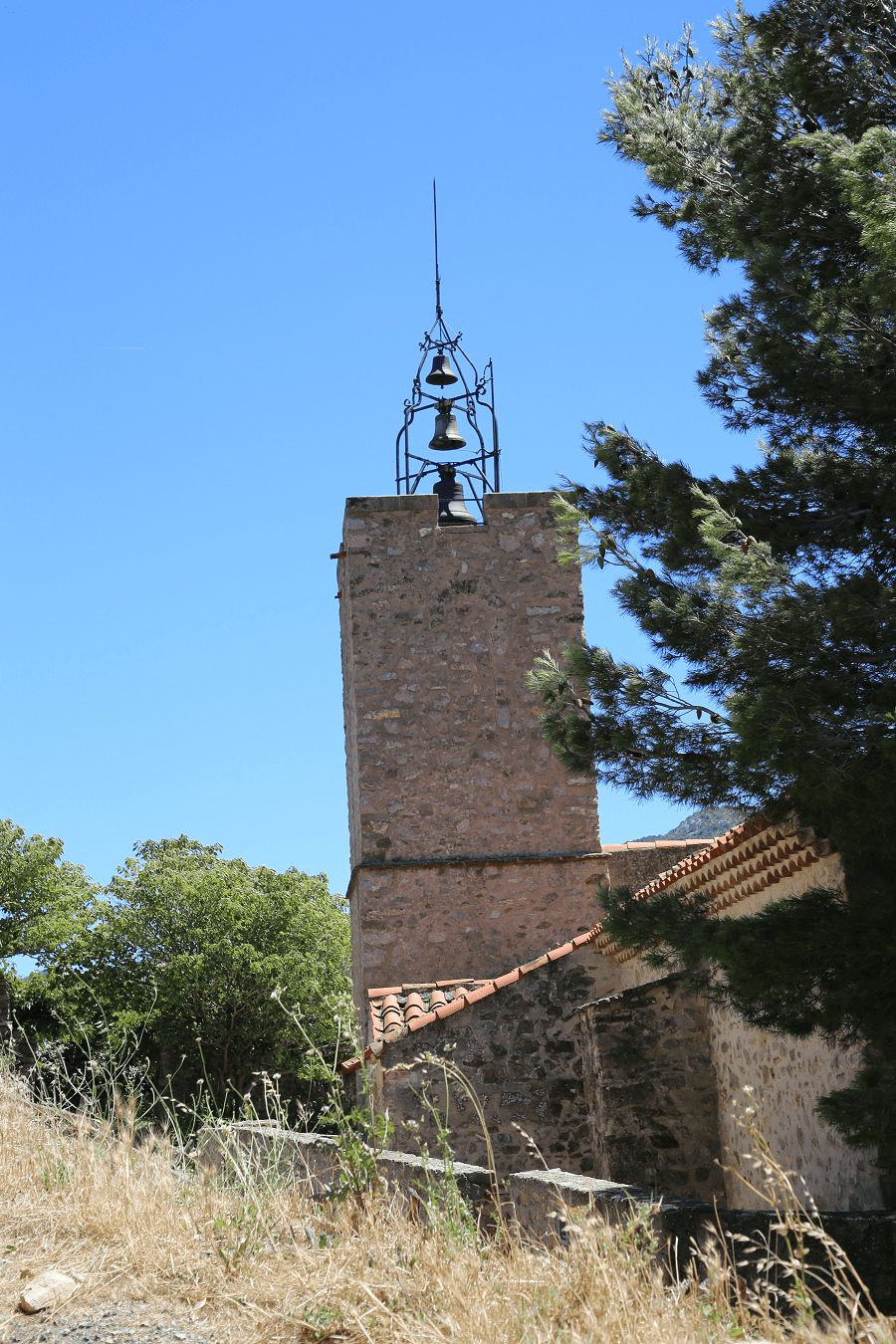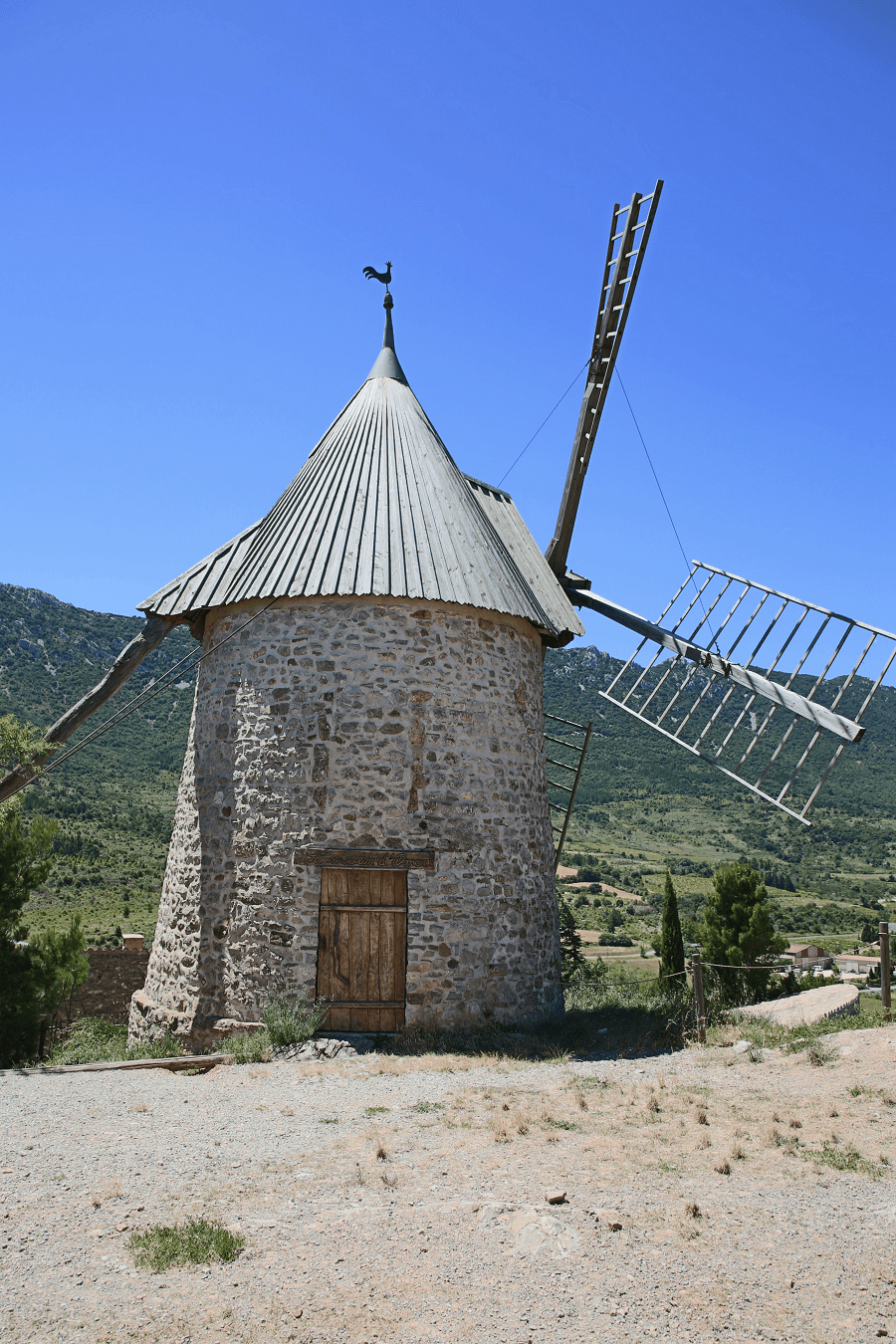Cucugnan (fr. Cucugnan, Cucunhan in Occitan) is a commune in the Aude department in southern France (Pyrenees) in Occitania, approximately 29.5 kilometres (18.3 mi) north-west of Perpignan.
The small village overlooks the ruined Peyrepertuse and Quéribus castles.
Historically and culturally, the town is part of the Corbières massif, a limestone chaos forming the transition between the Massif Central and the Pyrenees. Exposed to a Mediterranean climate, it is drained by the Verdouble, the Cucugnan stream and various other small streams. The town has a remarkable natural heritage: a Natura 2000 site (the “low Corbières”) and five natural areas of ecological, fauna and flora interest.
Cucugnan is a rural commune which has 116 inhabitants in 2021, after having experienced a population peak of 312 inhabitants in 1846. Its inhabitants are called the Cucugnanais or Cucugnanaises.
Main attractions
Cucugnan is in a plain which is accessed by the Grau de Maury which is dominated and which was controlled by the castle of Quéribus, the last Cathar citadel and French sentinel at the gates of Spain until 1659 (Treaty of the Pyrenees, moving the border to the Albères chain).
Cucugnan is a craft village, topped by the Saint-Julien-et-Sainte-Basilisse church, mentioned for the first time in 1360 and housing a pregnant Virgin.
The remains of a castrum are still visible above the active Moulin d’Omer.
At the very top of the village, the seigneurial mill had been preserved following the French Revolution. A remarkable feature of this mill is that it still benefits from a milling right and a quota of 837 quintals. The exceptional aerological conditions of the Triby valley and the frequency of windy days allowed it to be put back into operation at the beginning of 2006. The complete chain from grain to bread can be a destination for a visit.
The mill is built directly into the sloping rock, above three old threshing floors.
This windmill, which is mentioned in archival documents in 1692, belonged then to the lords of Cucugnan and remained so until the Revolution.
In 1838, it was in ruins.
In 2003, the building and the mechanism were rehabilitated. Its wings, made of ash covered in canvas, are oriented thanks to a pivoting roof. The main beam is made of oak, the gears are made of boxwood and the millstones are made of granite.
Church of Saint-Julien-et-Sainte-Basilisse
The church is dedicated to Saints Julian and Basilisse. The name of the church suggests that a religious building existed in the Carolingian era, without however implying the presence of a grouped habitat. However, the church is mentioned from 1360.
When the lords of Cucugnan asserted their power, the place of worship was moved to their castle at the top of the village.
This church, which was very deteriorated, was demolished around 1860. Its stones were used in the construction of the current church which was restored in 1991.
This new neo-Gothic style church is made up of a three-bay nave, a polygonal choir, two chapels forming a transept and a bell tower.
How to get to?
From Paris: 8 hr 55 min (847 km) via A71 and A75
From Toulouse: 2 hr 23 min (184 km) via A61
From Andorra: 3 hr 1 min (153 km) via D613
From Barcelona: 3 hr 22 min (244 km) via AP-7
From Madrid: 9 hr 1 min (843 km) via A-2 and AP-2
From Monaco: 5 hr 29 min (496 km) via A8 and A9
From Moscow: 38 hr (3,422 km) via E30/M1
From Belgrade: 18 hr 58 min (1,800 km) via E70
From Istanbul: 30 hr (2,749 km) via E70
From Bern: 7 hr 58 min (754 km) via A9
Main information
Area: 15 sq. km
Coordinates: 42°51′07″N 2°36′11″E
Population: 116
Languages: French, Occitane
Currency: euro
Visa: Schengen
Time: Central-European UTC +1
See here Pyrenees travel guide
See here France travel guide
See here Spain travel guide





